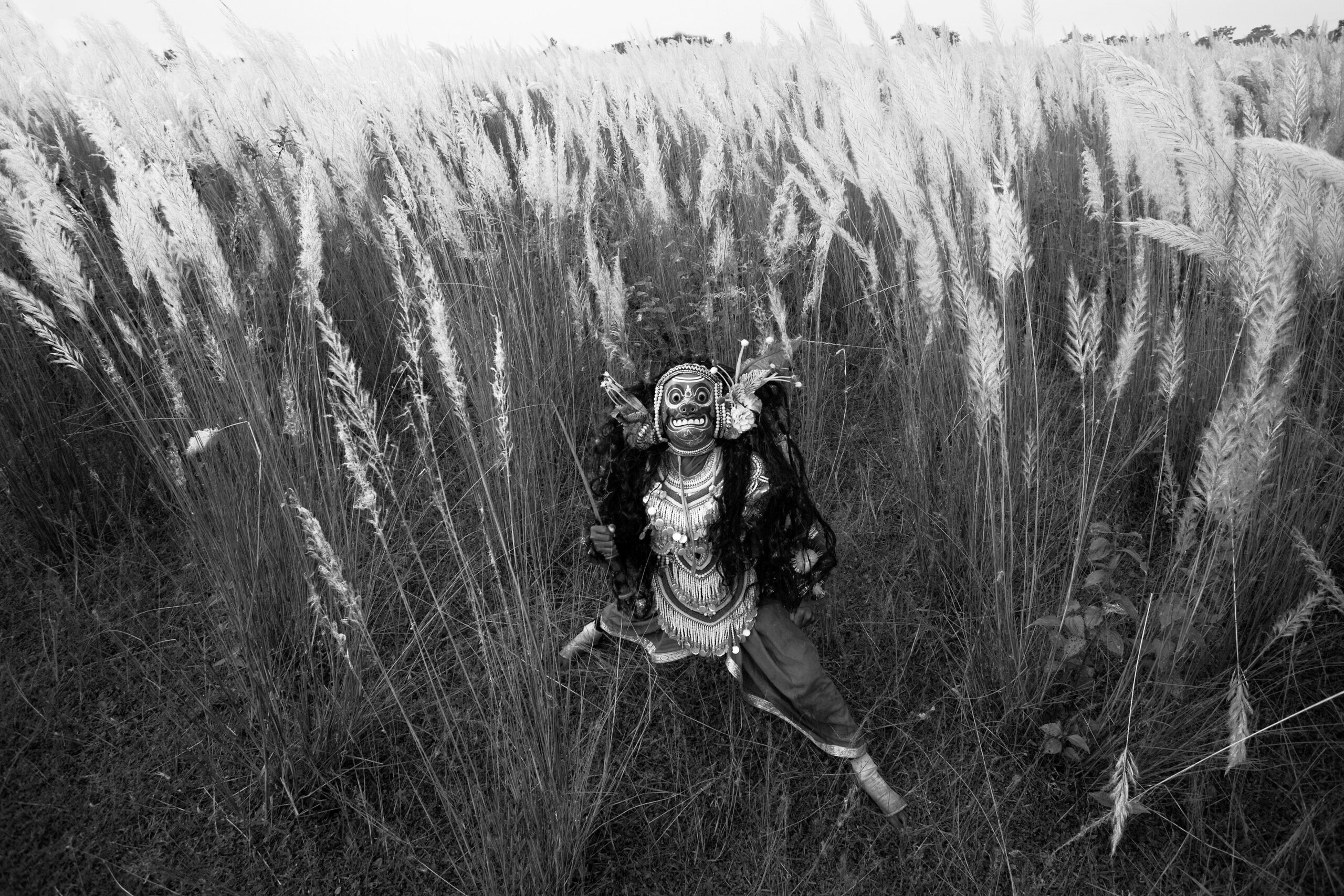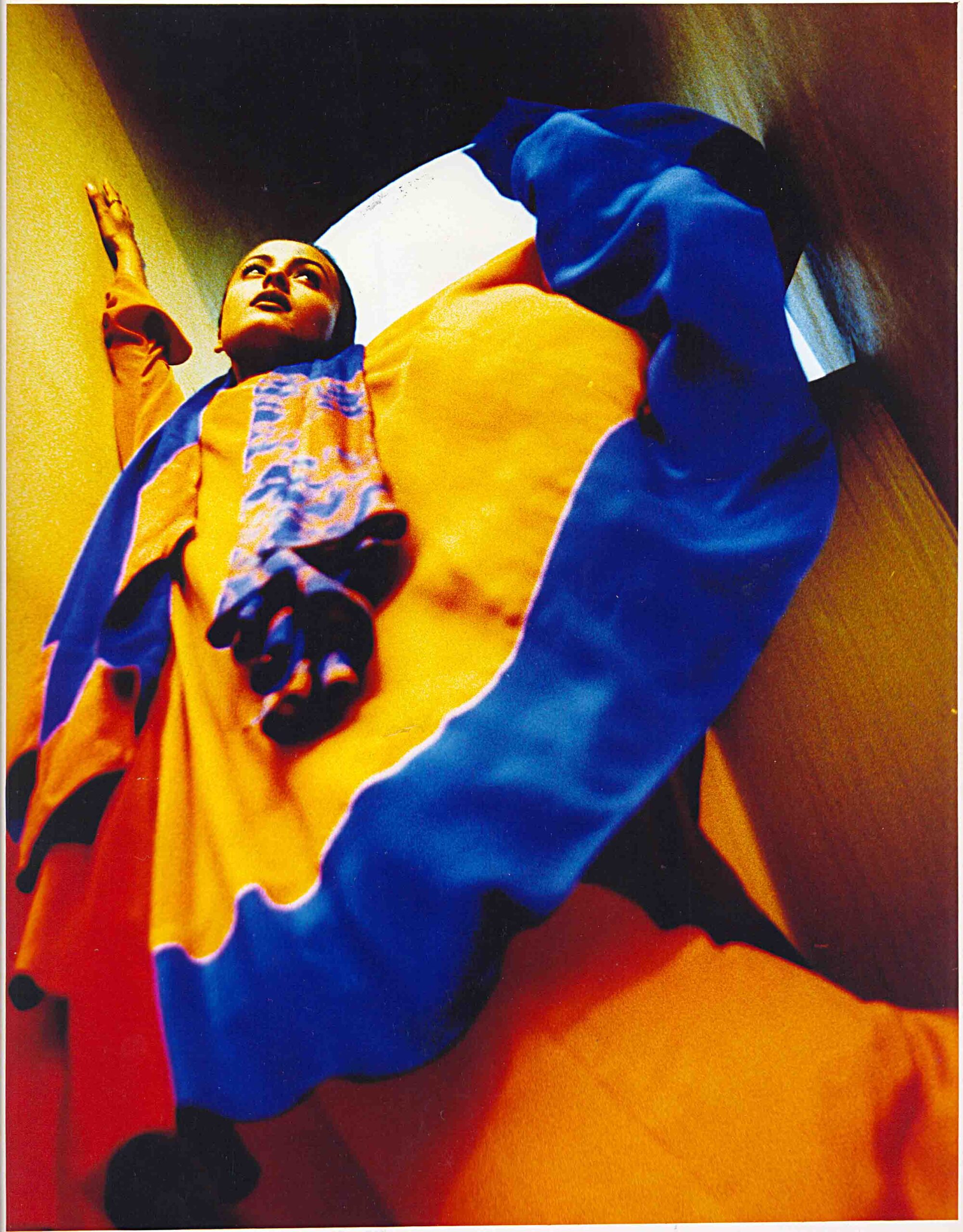Photography:
A colonial fear
Abul Kalam Azad
Shanavas

SN: I have seen a photograph by you titled “Defend Secularism”, done for the Sahmat
campaign of Delhi – an image of a man without a head, holding a lotus in front and a knife
in the back. In fact, the posture is a bit sarcastic. It is aiming at the socially circulated fear
created by the violence and holocaust you have mentioned, and at the same time, conveys an
expression which soothes the fear of violence.
AKA: It’s about social fear. Take for instance, the Gujarat issue. It’s a result of a conspiracy
and cannot be justified, whether it’s Hindu fascism or Islamic fascism. Every ideology has the
element of fascism in it. We try to be international. The effort is to make Islam an international
religion; same dress code, same food, same education, same gestures and so on. A totality
of “everything-has-been-said-in-Quran-or-Marxism”. This totalitarian perspective is a big
shortcoming of modernity. The views on secularism possess the same totalitarian aspect. How
is it possible to unify the lives of people that show differences in culture and concepts? I prefer
Gandhi’s ‘fellowship’ which tries to be with people rather than Nehru’s elite state secularism. But
I don’t negate the concept of secularism insofar as how much it is inevitable to vote for. At the
same time, I don’t believe that secular culture can remediate the problem.
SN: Many readings are possible on Marxism. But, ‘Das Kapital’ is also an account of the
execution of capitalism through the displacement of indigenous people and farmers.
AKA: Mohammed and Marx are similar in certain ways, the concept of prophecy. The earliest
concept of collectiveness might be of Buddha. The concept of modernity, a pantheism which
sees everything as united. This is same as Mohammed’s idea of “thouheed”-concepts such as
mihraj, meditation, enlightenment, Jahiliyyah phase etc. Burāq, Kamadhenu, flying, elevation,
concept of a collective consciousness, monotheism – all these are contexts of man’s efforts to
acquire knowledge. But, looking back today, it should be analysed as to where it has led us to. I
have never seen an image of Mao with a gun in his hand, but today every Maoist has a gun in his
hand. In these days everyone feels a credibility gap. Nothing is there to hope for. No way to know
the truth – an entrapped situation. In one of my series I have tried to express this situation by using a
bullet collected from Kashmir, a mouse-trap and a rabbit stabbed with a knife. I am searching for the
absence of violence. That is why I go for the images of Narayana Guru and Nataraja Guru. I have
done an image of Rajan (victim of Emergency in 1975). But it was not out of any sympathy for Naxalism.
His face was haunting me, not as a hero but as an embodied plight of everyone. I have pictured the
incident of political murder of labourers in front of Mattanchery court: a tableau with dresses soaked in blood. In this way,
violence repeats in the temper of Keralites. There might be some tribal motives which control our minds behind the political murders of Kannur.


